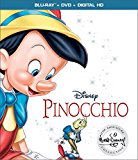| Reviews & Columns |
|
Reviews DVD TV on DVD Blu-ray 4K UHD International DVDs In Theaters Reviews by Studio Video Games Features Collector Series DVDs Easter Egg Database Interviews DVD Talk Radio Feature Articles Columns Anime Talk DVD Savant Horror DVDs The M.O.D. Squad Art House HD Talk Silent DVD
|
DVD Talk Forum |
|
|
| Resources |
|
DVD Price Search Customer Service #'s RCE Info Links |
|
Columns
|
|
|
Pinocchio
The animated classic returns with some new extras
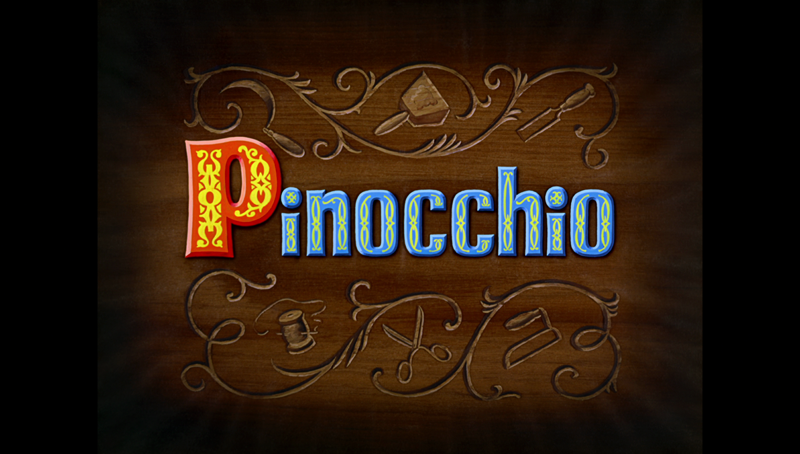
Loves: Animated movies
Likes: Disney films
Dislikes: double (and triple) dips
Hates: How disturbing Pleasure Island is
The Movie
Nowhere on my list of favorite Disney films would you find Pinocchio, but that is not a judgement on its quality. The animation is not just technically brilliant, it's also dripping with artistry, while the story and characters are engaging and the few musical numbers are solid and move the plot forward at a decent clip. The reason why I rarely revisit Pinocchio is because, as a child, it was simply terrifying. Though not the darkest of Disney's animated classics, its high points are emotionally scarring, as the young Pinocchio--a newly sentient marionette who only wants to be a real boy--is put through the wringer by those around him, with the exception of his kindly old creator, Geppetto.
After a storybook opening (both figuratively and literally), in which Geppetto's puppet is given life by the Blue Fairy and a conscience in the form of the friendly Jiminy Cricket, the film becomes the harrowing tale of a child beset upon from all sides--whether it's an anthropomorphic fox by the name of Honest John, a perpetually angry puppeteer named Stromboli or the evil Coachman, all of whom see young Pinocchio as a ticket to a payday--and the conditions he finds himself in become increasingly awful, reaching their terrible pinnacle on Pleasure Island, a boys' bacchanal with a horrible secret. Even as an adult it's tough to watch this portion of the film, which has all the hallmarks of a classic horror film, but as a kid it's nightmare inducing.
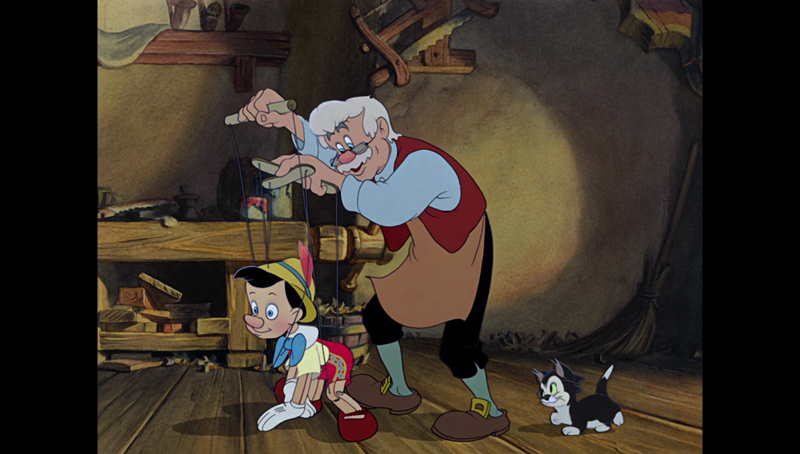
One of the traditional elements of a Disney film is the music, and Pinocchio provided what became the theme song of the entire Disney organization in When You Wish Upon a Star, an old-school song that . But besides that classic, and the bouncy, but brief "Got No Strings", it's not the most memorable lineup of songs, with just a few catchy, but forgettable tunes like "Give a Little Whistle" and "Hi Diddle Dee Dee". Not that the movie needs more music. This is Disney before the Broadway era, and the focus is on story and character, with even secondary parts like Geppetto's cat Figaro and Honest John's sidekick Gideon (voiced with all of one sound by Mel Blanc) making an impact.
At just 88 minutes, Pinocchio is a rather fast watch, but it does have an unusual episodic structure, complete with fades to black between sequences (which mimics the original style of the published story the film is based on.) This doesn't have a great effect on the film's momentum, as it moves in fits and starts, and makes it feel somewhat like you're watching TV with the commercials taken out. But that's probably the only issue you'll have with the film, as Dickie Jones gives Pinocchio a perfect level of innocence with his performance and the film around him manages to serve both morals and entertainment without sacrificing on either side.
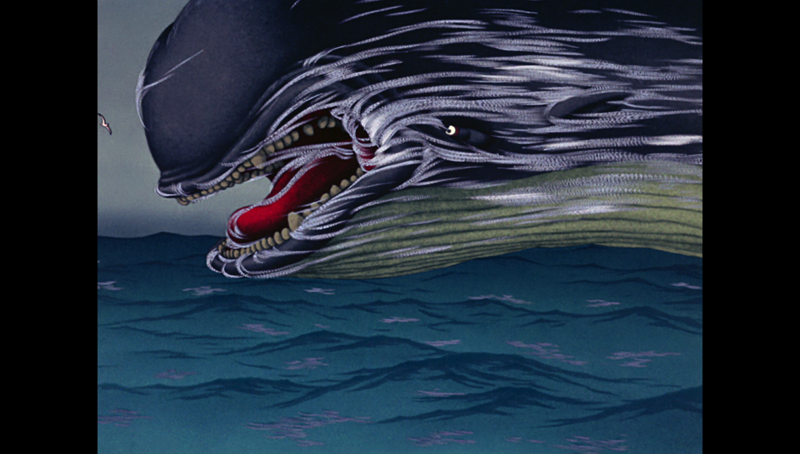
The Discs
This new Signature Collection version of the film arrives in a two-disc set (one Blu-ray and one DVD) in a standard-width, dual-hubbed BR keepcase inside an embossed, foil-enhanced slipcover. The Blu-ray features an animated menu, offering the option to watch the film, select chapters, adjust languages and check out the extras. Audio options include English DTS-HD Master Audio 7.1 and Dolby Digital 1.0, French 7.1 DTS-HD High Resolution and Spanish Dolby Digital 5.1 tracks, while English SDH, French and Spanish subtitles are available.
The Quality
Presented with a 1080p, AVC-encoded transfer, you can watch Pinocchio either in the original theatrical version, or in DisneyView, which replaces the black columns on either side of the film's 1.33:1 image with art by late Disney artist Toby Bluth. Using the fim's fades to black as opportunities to change the illustrations, DisneyView is an attractive, unobtrusive enhancement to the film and adds to the movie's storybook feel. The transfer itself is the same one found on the previous 70th anniversary Blu-ray, which (incredibly) arrived eight years ago. Though there's a curiosity as to what a 4K master could look like, there's nothing to complain about with this presentation. The thing about hand-drawn animation that CG will have a near-impossible time matching is the brushstroke, and Pinocchio utilizes the artist's touch as well or better than anything Disney has ever released. There's so much texture detail in the animation, and this disc lets it all shine, from the way the colors of Figaro's fur are rendered to the beauty of Monstro's waves. Color and contrast are excellent, black levels are solid and the image is strong and clean throughout. Distractions are not a concern in any way.
It would be difficult to imagine why a movie of Pinocchio's age and audio design would need a 7.1 DTS-HD Master Audio track, but it's here (the same one as previously released.) Though certainly booming and powerful, it's as artificial as you would imagine for a film originally released with mono sound, with the usually tricks of duping music into the surrounds to boost their effect (which means you're starting from a high point, considering how great the score is) and isolating bass effects (the results of which are hit or miss.) There's nothing about the track that negatively affects the film, as the sound is as crisp as it was when recorded almost 80 years ago (which means some voices aren't as strong as others.) It just draws more attention to the age of the materials by emphasizing them as separate pieces, rather than as a well-crafted whole. Thankfully a cleaned-up version of the original sound is also available for those who want to compare.
The Extras
This is hardly a comprehensive edition, as a number of bonus features found on earlier releases have been left behind, including a deleted song, art galleries and some set-top games. With one notable exception (discussed later) it's not a dramatic loss, but the song and art would have been appreciated.
There's a handful of new extras on this release, starting with "The Pinocchio Project: When You Wish Upon a Star" (a 3:03 featurette and 2:49 video), which looks at JR Aquino, Tanner Patrick and Alex G's pop ballad take on the classic song (produced by Grammy nominee Philippe Saisse.) The YouTubers haven't done anything particularly memorable with the music, but younger viewers may enjoy it.
In "Walt's Story Meetings: Pleasure Island" (7:41), Pixar director Pete Docter and historian J.B. Kaufman act as guides to sketches, concept art and voice recreations (from meeting transcripts) of the ideas pitched at the meetings between Disney and his team as they decided how the Pleasure Island scene would play out. Getting to see and hear this background info provides wonderful insight into the studio's production effort. To actually hear Walt though, check out "In Walt's Words - Pinocchio" (4:48) in which he talks about the film and the challenges it faced, in a 1956 audio recording over a montage of Disney-related footage.
Rounding out the new content is a newly-restored 1927 Oswald the Lucky Rabbit cartoon, "Poor Papa" (5:19). In the first Disney Oswald film ever, Oswald is a new father who is over-run by his quickly expanded brood in this simply-animated black and white short. Though there are some impressive elements for its era, including playing with depth, it's not the most enjoyable cartoon. It does have historical significance, and you can see the origins of the Disney style.
Moving into the older material, we get an audio commentary, carried over from previous releases, features Disney expert Leonard Maltin, animator Eric Goldberg and historian J.B. Kaufman. Sadly, the Cine-Explore visual features that accompanied the track on the older Blu-Ray are not included here, but the cut-in interviews with people involved in the film, like Ward Kimball, Frank Thomas and Ollie Johnston, are still heard. The focus is on production history and animation technique, but the trio also provides plenty of trivia and stories for viewers who are less intrigued by the shop talk. For animation fans, it's fascinating.
There are a few making-of featurettes, including the substantial "No Strings Attached: The Making of Pinocchio" (56:09) and the far fluffier "A Wish Come True: The Making of Pinocchio" (5:06), which hails from an earlier DVD. "No Strings Attached" boasts a wealth of interviews with creators and experts, who discuss every element of the film, from its origins to the production and legacy. It's an excellent complement to the commentary (and all three men participate in the featurette as well.) "A Wish Come True" pales in comparison, feeling like the EPK piece it is, but it has a few bits of info to share.
The 6:25 "The Sweatbox" is an interesting look at the internal review sessions Walt Disney would hold with his animators, utilizing recreations based on minutes from those meetings. Though common today in animation, Disney pioneered this open criticism concept, and his films benefitted from them, as this featurette explains.
A trio of deleted scenes, accompanied by an introduction (running 10:33 in all) shows three moments that didn't make it into the movie, through sketches, narration and voiceover, including the story of Pinocchio's ancestor and an alternate ending. There's interesting insight and some great archival art to check out here.
Also from the archives is some live-action reference footage (9:57), which was shot to help the animators as they drew. Though the artists certainly interpreted this material in their own way, it's interesting to see how it all began before pencil hit paper. For more behind the scenes content, a Storyboard-To-Film Final Comparison (4:04) offers an assortment of shots from the film in split-screen with the storyboards that preceded them. If only this was in widescreen, so you could see it better.
"Geppettos Then and Now" (10:57) is a real-world tie in to the film, introducing toymakers of today, including some traditional puppeteers, along with people working with new technology (or at least technology that was new at the time. Oddly, there's a large focus on Pixar's Wall-E, as a toy robot maker is profiled, and the VR material is a bit dated now, but it's an interesting piece nonetheless.
Another pop music video for "When You Wish Upon a Star" made it in here, this time an auto-tuned dance version from former Disney Channel star Meaghan Jette Martin (3:14). It's actually not bad, but it obviously didn't do much for Martin's singing career.
A Sing Along version of the film is really just a partial subtitle track, with the lyrics of the songs presented on the screen. Similarly, the "Song Selection" is a limited chapter listing, taking you to five songs, while "Info" option is just a legal disclaimer.
Wrapping things up is a trio of trailers, with the original theatrical Trailer from 1940, (1:52), the 1984 theatrical trailer (1:25) and the 1992 theatrical trailer (1:33). These are mainly interesting for seeing how the way the film was sold changed over the decades.
Also in the set is a code for a digital copy of the movie.
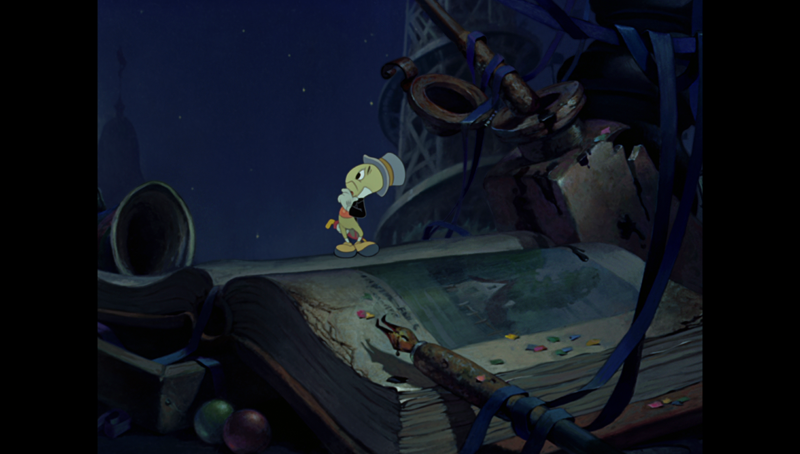
The Bottom Line
Though it's not a personal favorite, it's hard to deny that Pinocchio is one of the finest pieces of animated art ever to come out of Disney, and as my daughter's rapt attention during her first viewing shows, it maintains its entertainment value across generations. This release hasn't introduced any improvements to an already impressive presentation, but adds in a few brief new extras to make up for those lost from previous editions. If am HD version of Pinocchio isn't in your collection, this is certainly the way to correct that void, but if you own the 70th anniversary Blu-ray, you can sit this one out.
Francis Rizzo III is a native Long Islander, where he works in academia. In his spare time, he enjoys watching hockey, writing and spending time with his wife, daughter and puppy.Follow him on Twitter
*The Reviewer's Bias section is an attempt to help readers use the review to its best effect. By knowing where the reviewer's biases lie on the film's subject matter, one can read the review with the right mindset.
|
| Popular Reviews |
| Sponsored Links |
|
|
| Sponsored Links |
|
|
| Release List | Reviews | Shop | Newsletter | Forum | DVD Giveaways | Blu-Ray | Advertise |
|
Copyright 2024 DVDTalk.com All Rights Reserved. Legal Info, Privacy Policy, Terms of Use,
Manage Preferences,
Your Privacy Choices | |||||||









